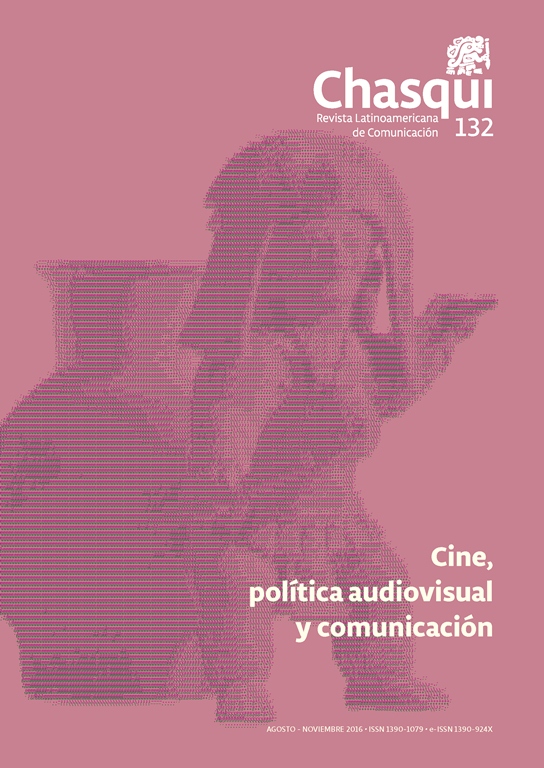Roller coasters of vain pleasure. Cultural industry, legislation and national cinema
DOI:
https://doi.org/10.16921/chasqui.v0i132.2877Keywords:
cultural industry, diversity, public policies, national cinemaAbstract
After ten years of approving the first law of cinema in Ecuador the view on the place that national cinemas occupy inside the global cultural industry faces realities and naivetés of the process. The international division of labour of the symbolic work, often in an implicit and indirect way, establishes specific roles to be accomplished for the emergent cinematography among which is included the condition of creative stock to feed, eventually, the voracious hegemonic cultural industry. Beyond that, thanks to the laws of promotion and protection issued by States around the world, which constitutes a symptom of social development, the national cinemas express the cultural diversity and contain the historical memory of the people.References
Adler, E. & Haas, P. (2009). Las comunidades epistémicas, el orden mundial y la creación de un programa de investigación reflectivo. [Originalmente en: International Organization, Vol. 46. No. 1. Winter. MIT Press, 1992, p. 367-390] Relaciones internacionales: Revista académica cuatrimestral de publicación electrónica, (12), 7-26. Disponible en http://bit.ly/2feJXvX.
Adorno, T. & Horkheimmer, M. (1971). Dialéctica del iluminismo. Buenos Aires: Sur.
Baumol, W. & Bowen, W. (1966). Performing Arts. The Economic Dilemma. New York: Twentieth Century Found.
Benjamin, W. (2003). La obra de arte en la época de la reproductibilidad técnica. México: Ítaca Editorial.
Echeverría, B. (1994). Modernidad, mestizaje cultural, ethos barroco. México: El Equilibrista.
García Canclini, Néstor (2001). Culturas Híbridas. Estrategias para entrar y salir de la modernidad. Barcelona: Paidos Ibérica.
Kelsen, H. (1982). Teoría pura del derecho. México: Universidad Nacional Autónoma de México.
Downloads
Published
Issue
Section
License
- Authors retain copyright and grant the journal right of first publication with the work simultaneously licensed under a Creative Commons Attribution-NoDerivs License (CC BY-ND) that allows others to share the work with an acknowledgement of the work's authorship and initial publication in this journal.
- Authors are able to enter into separate, additional contractual arrangements for the non-exclusive distribution of the journal's published version of the work (e.g., post it to an institutional repository or publish it in a book), with an acknowledgement of its initial publication in this journal.
- Authors are permitted and encouraged to post their work online.

